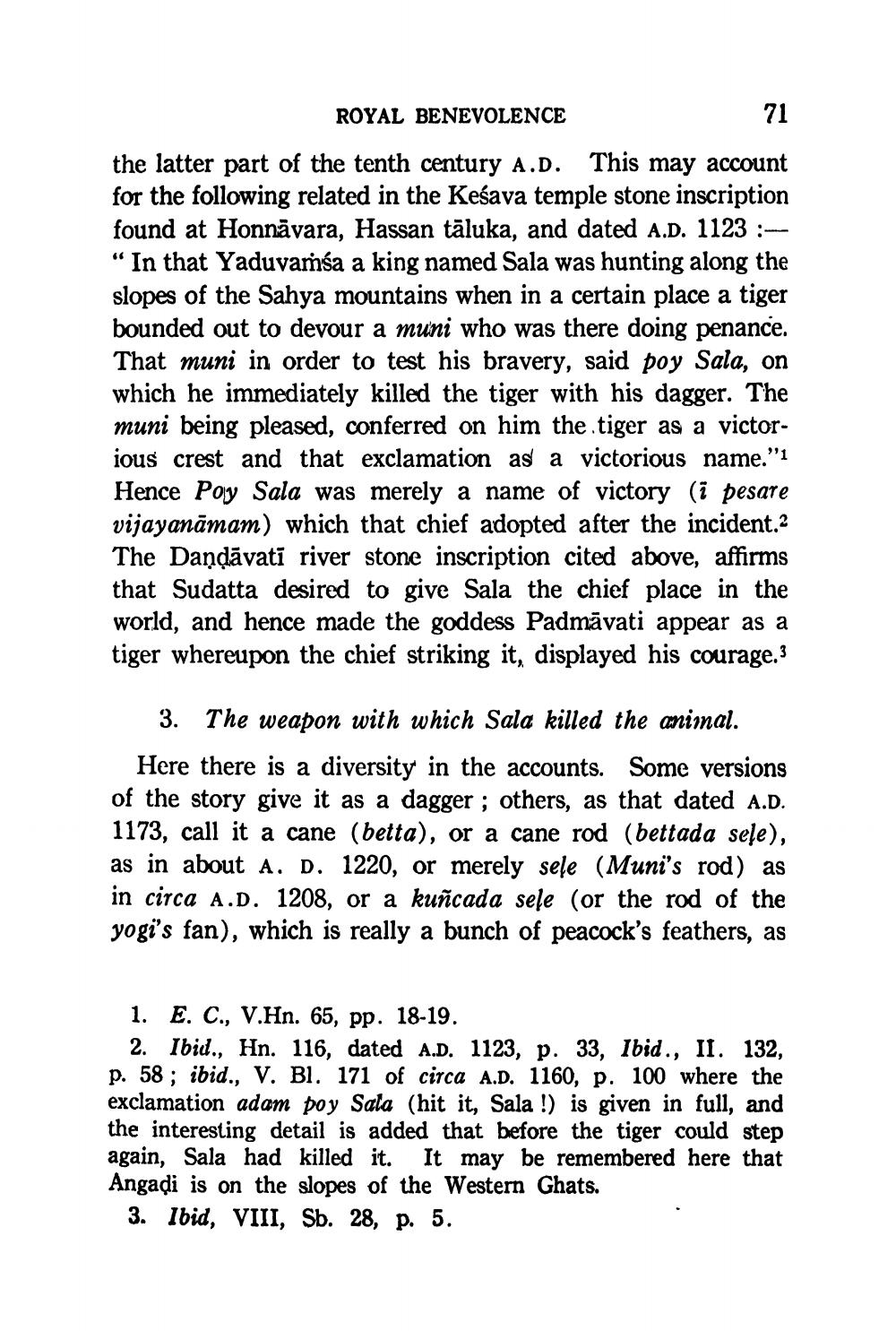________________
ROYAL BENEVOLENCE
71
the latter part of the tenth century A.D. This may account for the following related in the Keśava temple stone inscription found at Honnavara, Hassan tāluka, and dated A.D. 1123 :"In that Yaduvamsa a king named Sala was hunting along the slopes of the Sahya mountains when in a certain place a tiger bounded out to devour a muni who was there doing penance.
That muni in order to test his bravery, said poy Sala, on which he immediately killed the tiger with his dagger. The muni being pleased, conferred on him the tiger as a victorious crest and that exclamation as a victorious name."1 Hence Poy Sala was merely a name of victory (i pesare vijayanāmam) which that chief adopted after the incident.2 The Daņdāvatī river stone inscription cited above, affirms that Sudatta desired to give Sala the chief place in the world, and hence made the goddess Padmāvati appear as a tiger whereupon the chief striking it, displayed his courage.3
3. The weapon with which Sala killed the animal. Here there is a diversity in the accounts. Some versions of the story give it as a dagger ; others, as that dated A.D. 1173, call it a cane (betta), or a cane rod (bettada sele), as in about A. D. 1220, or merely sele (Muni's rod) as in circa A.D. 1208, or a kuñcada sele (or the rod of the yogi's fan), which is really a bunch of peacock's feathers, as
1. E. C., V.Hn. 65, pp. 18-19.
2. Ibid., Hn. 116, dated A.D. 1123, p. 33, Ibid., II. 132, p. 58; ibid., V. Bl. 171 of circa A.D. 1160, p. 100 where the exclamation adam poy Sala (hit it, Sala !) is given in full, and the interesting detail is added that before the tiger could step again, Sala had killed it. It may be remembered here that Angadi is on the slopes of the Western Ghats.
3. Ibid, VIII, Sb. 28, p. 5.




